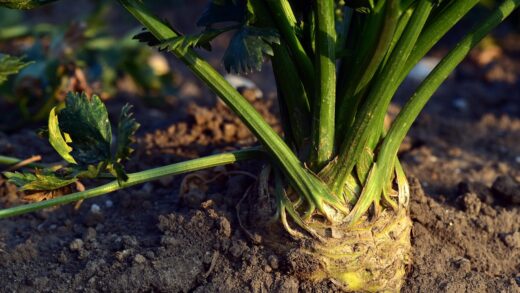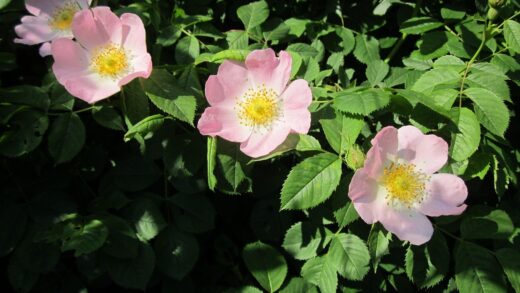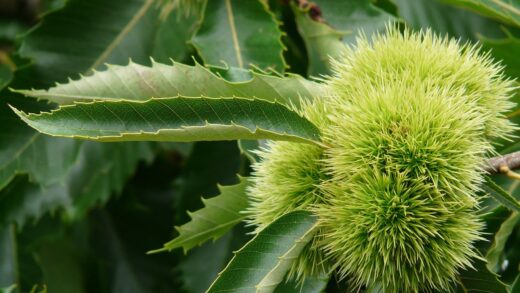Caring for gladiolus is a rewarding process that ensures a spectacular display of towering, vibrant blooms. The foundation of successful gladiolus cultivation lies in providing the right growing conditions from the very beginning. This involves selecting a suitable location, preparing the soil meticulously, and understanding the plant’s fundamental needs throughout its life cycle. Proper care extends beyond planting, encompassing ongoing maintenance during the growing season, which is crucial for the development of strong stems and abundant flowers. Diligent attention to these initial and continuous aspects of care will lay the groundwork for healthy plants that are more resilient to environmental stresses, pests, and diseases, ultimately leading to a breathtaking floral show.
The initial phase of care begins long before the first flower spike emerges. It is essential to choose a site that receives ample sunlight, as gladioli are sun-loving plants that require at least six to eight hours of direct sunlight daily to thrive and produce high-quality blooms. The soil should be well-draining to prevent the corms from rotting; heavy clay soils should be amended with organic matter like compost or aged manure to improve their structure and drainage. Soil pH is another critical factor, with gladioli preferring a slightly acidic to neutral range, ideally between 6.0 and 7.0. Conducting a soil test can provide valuable insights and allow for necessary adjustments before planting.
As the gladiolus plants begin to grow, consistent and appropriate care becomes paramount. Staking is often necessary, especially for taller varieties or those grown in windy locations, to prevent the heavy flower spikes from bending or breaking. It is best to place stakes at the time of planting or shortly after the shoots emerge to avoid damaging the developing corms and roots later on. As the flower spikes grow taller, they can be loosely tied to the stakes at intervals using soft garden twine or plant ties. This support ensures the stems remain upright, showcasing the flowers to their best advantage and protecting the plant from physical damage.
Throughout the growing season, maintaining a weed-free environment is crucial for the health of gladiolus plants. Weeds compete for essential resources such as water, nutrients, and light, which can hinder the growth and flowering potential of the gladioli. Regular, shallow cultivation or hand-pulling of weeds is effective, but care must be taken not to disturb the sensitive roots of the gladiolus. Applying a layer of organic mulch, such as straw or shredded bark, around the base of the plants can significantly suppress weed growth, conserve soil moisture, and help regulate soil temperature, further contributing to a healthy growing environment.
The growing environment
Creating the optimal growing environment is fundamental to the successful cultivation of gladiolus. These plants have specific requirements regarding their physical surroundings that directly impact their health, vigor, and blooming capacity. Providing the right combination of light, soil, and air circulation is not just beneficial but essential for preventing common problems and encouraging the development of robust plants with impressive floral displays. A well-chosen location will support the plant’s natural growth habits and minimize the need for corrective interventions later in the season. Therefore, careful site selection and preparation are the first and most critical steps in gladiolus care.
More articles on this topic
Light exposure is arguably the most important environmental factor for gladioli. They are true sun-worshippers and demand a location that provides full sun for the majority of the day. Insufficient sunlight will result in weak, spindly stems that may be unable to support the weight of the flower spikes, and it can significantly reduce the number and quality of the blooms. A south-facing location is often ideal in many climates. When planting in beds with other perennials or annuals, ensure that taller plants do not cast excessive shade on the gladioli, particularly during the peak sun hours of the day.
Soil composition and drainage are equally critical components of the ideal gladiolus habitat. These plants are intolerant of waterlogged conditions, which can quickly lead to corm rot and other fungal diseases. The perfect soil is a sandy loam that is rich in organic matter and allows water to drain freely. Before planting, it is highly advisable to amend the soil with materials like compost, peat moss, or well-rotted manure. This not only improves the soil structure and drainage but also provides a slow release of essential nutrients, creating a fertile foundation for healthy growth.
Good air circulation is another key element in preventing diseases that can afflict gladiolus. Planting them too closely together can impede airflow, creating a humid microclimate around the foliage that is conducive to the development of fungal pathogens like botrytis and rust. Proper spacing, typically around 15 to 20 centimeters apart, allows air to move freely between the plants, which helps to keep the leaves dry and reduces the risk of disease outbreaks. This is particularly important in regions with high humidity or frequent rainfall during the growing season.
Seasonal care schedule
A structured seasonal care schedule is vital for guiding gladiolus through its annual life cycle, from planting to dormancy. Each season presents different tasks and requirements that must be met to ensure the plants remain healthy and productive. By following a well-defined calendar of activities, a grower can anticipate the plant’s needs and provide timely care, which is far more effective than reacting to problems as they arise. This proactive approach covers planting in the spring, maintenance in the summer, and preparation for winter in the autumn.
More articles on this topic
Spring is the season of new beginnings for gladiolus, and the care provided during this time sets the stage for the entire growing season. The primary task is planting the corms after the last frost date has passed and the soil has warmed to at least 13°C. To encourage a continuous display of flowers throughout the summer, it is a good practice to plant corms in succession, every two weeks, from late spring into early summer. This is also the ideal time to incorporate a balanced, slow-release fertilizer into the soil to provide the initial nutrients required for robust growth.
Summer care focuses on maintaining the growth and encouraging spectacular blooms. This involves consistent watering, especially during dry spells, ensuring the plants receive about 2.5 centimeters of water per week. As the flower spikes develop, providing support with stakes becomes essential to prevent them from toppling over. Deadheading, or removing the spent individual florets from the bottom of the stalk upwards, keeps the plant looking tidy and channels its energy into developing the remaining flowers and nourishing the corm for the following year, rather than producing seeds.
Autumn is a critical period for preparing the gladiolus for its dormant phase. In climates where the ground freezes, the corms must be lifted after the first light frost has killed the foliage but before the ground freezes solid. The foliage should be cut back to a few centimeters above the corm, and the corms should be carefully dug up. After lifting, they need to be cured in a warm, dry, and airy location for a few weeks to allow the skin to harden, which protects them during storage. This process is essential for their survival and for ensuring a healthy start the following spring.
Monitoring for health
Regularly monitoring the health of gladiolus plants is a cornerstone of proactive and effective care. This practice involves frequent and careful inspection of the leaves, stems, flowers, and the surrounding soil to detect the earliest signs of stress, disease, or pest infestation. Early detection allows for timely intervention, which can often prevent minor issues from escalating into major problems that could compromise the health of the entire crop. A vigilant grower who is familiar with the appearance of a healthy gladiolus can quickly spot deviations and take appropriate action.
The visual inspection should begin with the foliage. Healthy gladiolus leaves are a vibrant green and have an upright, sword-like appearance. Any signs of discoloration, such as yellowing (chlorosis), brown spots, streaks, or a mottled pattern, can indicate a range of issues from nutrient deficiencies to viral infections. Similarly, the presence of a powdery white substance on the leaves could signal powdery mildew, while rusty-orange pustules are a tell-tale sign of rust disease. Examining the undersides of the leaves is also important, as many pests and fungal spores reside there.
The stems and flower spikes also provide crucial clues about the plant’s health. Stems should be strong and straight; any weakness, bending, or discoloration at the base could suggest a root or corm rot problem. When the flower buds form, they should be well-shaped and plump. If buds appear distorted, fail to open, or show signs of being chewed, it is a clear indication of a pest problem, such as thrips, which are notoriously damaging to gladiolus flowers. The flowers themselves should have clear, vibrant colors, and any streaking or spotting could be a symptom of a viral disease.
Beyond the plant itself, observing the surrounding environment is also a part of health monitoring. The condition of the soil, the presence of weeds, and the level of moisture should be regularly assessed. Poorly draining soil can lead to root diseases, while excessive weed growth can harbor pests and compete for resources. By adopting a routine of systematic observation, a grower can maintain a high level of awareness about the condition of their gladiolus plants and respond swiftly to any health threats, ensuring a long and beautiful flowering season.
Post-blooming care
The care provided to gladiolus plants after they have finished blooming is just as important as the care they receive during the growing season. This post-flowering period is a critical time when the plant focuses its energy on replenishing the corm for the next year’s growth. Proper management during this phase ensures the corm stores enough nutrients to survive dormancy and produce a robust plant and beautiful flowers the following season. Neglecting the plants once the flowers have faded is a common mistake that can lead to diminished performance in subsequent years.
Once a flower spike has finished blooming and most of the florets have withered, it should be cut back. The stalk should be removed down to the point where it meets the leaves, typically leaving about four to six healthy leaves intact on the plant. It is crucial to leave the foliage in place and not cut it back prematurely. These leaves will continue to photosynthesize, capturing energy from the sun and channeling it down into the corm. This process is essential for the development of a large, healthy corm and often for the formation of new cormels at its base.
During the post-blooming period, the plant still requires adequate water and nutrients. Continue to water the plants as needed to keep the soil moderately moist but not waterlogged. This allows the leaves to remain green and functional for as long as possible. A final application of a fertilizer that is low in nitrogen but high in potassium and phosphorus can be beneficial at this stage. This type of nutrient balance encourages corm development rather than leafy growth, helping to “charge up” the corm with the energy reserves it will need for dormancy and future growth.
The final stage of post-blooming care in colder climates is the lifting and storing of the corms. This should be done in the autumn, several weeks after flowering has ceased and typically after the first light frost has caused the foliage to start yellowing and dying back. Carefully dig up the corms, trim the remaining foliage close to the corm, and then cure them in a warm, well-ventilated area for two to three weeks. After curing, the old, withered mother corm can be separated from the new, plump corm, which is then stored in a cool, dark, and dry place over winter.
Common care mistakes to avoid
Even with the best intentions, certain common mistakes in gladiolus care can lead to disappointing results, from poor flowering to the loss of the plants altogether. Being aware of these potential pitfalls is the first step toward avoiding them and ensuring a successful growing experience. Many of these errors stem from a misunderstanding of the plant’s basic needs, particularly regarding water, depth of planting, and post-season handling. By learning to avoid these common missteps, gardeners can significantly improve the health and beauty of their gladiolus display.
One of the most frequent errors is improper watering. Gladioli require consistent moisture, especially during periods of active growth and flowering, but they are extremely susceptible to rot in waterlogged soil. The mistake is often twofold: either providing too little water during dry spells, which stresses the plant and leads to poor flower development, or providing too much water, which suffocates the roots and promotes fungal diseases. The key is to water deeply and thoroughly when the top few centimeters of soil are dry, allowing the soil to partially dry out between waterings, and ensuring the planting site has excellent drainage from the start.
Another common mistake is planting the corms at the incorrect depth. Planting gladiolus corms too shallowly can result in instability as the tall, heavy plant grows. The flower spikes can easily topple over, especially in wind or rain, because the root system lacks a firm anchor. Conversely, planting the corms too deeply can delay their emergence and may reduce the vigor of the plant. The general rule is to plant corms at a depth that is approximately four times their height, which typically translates to about 10 to 15 centimeters deep, providing the necessary support for the tall stems.
Finally, a critical error is the improper handling of the corms after the growing season, particularly in climates where they need to be lifted for the winter. Many gardeners either leave the corms in the ground in regions where they will not survive the winter freeze, or they lift and store them incorrectly. Failing to cure the corms properly after digging them up is a major issue; uncured corms are prone to rot and disease in storage. Storing them in a location that is too warm, too cold, or too humid can also lead to their demise. Proper curing and storage in a cool, dry, and dark environment are essential for their viability.


















